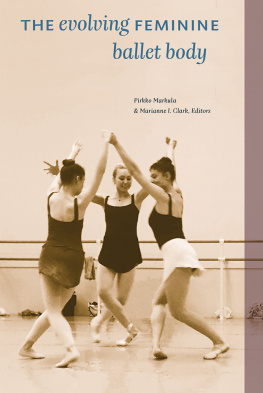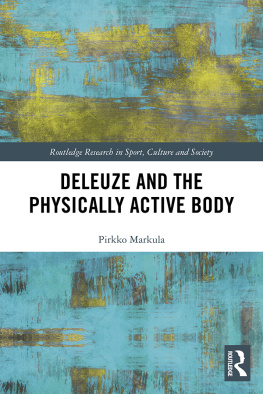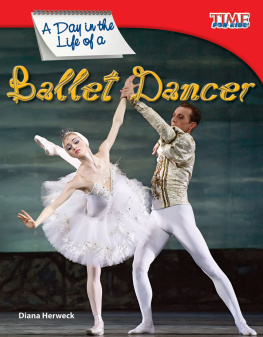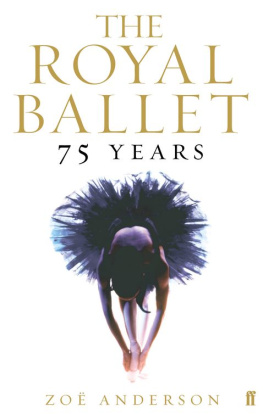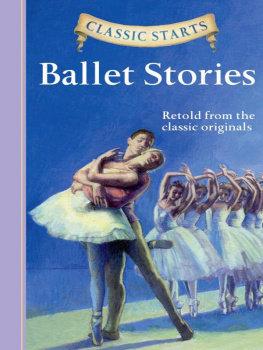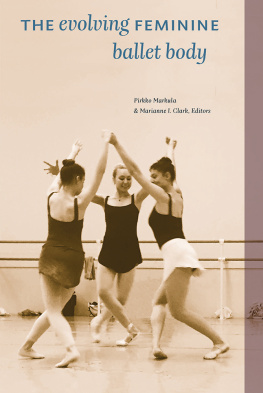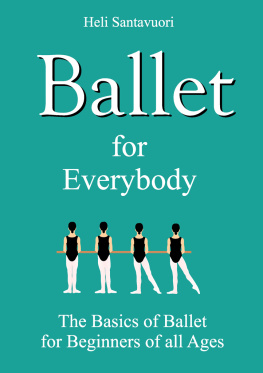
Published by
THE UNIVERSITY OF ALBERTA PRESS
Ring House 2
Edmonton, Alberta, Canada T6G 2E1
www.uap.ualberta.ca
Copyright 2018 The University of Alberta Press
LIBRARY AND ARCHIVES CANADA CATALOGUING IN PUBLICATION
The evolving feminine ballet body / Pirkko Markula & Marianne I. Clark, editors.
Includes bibliographical references and index.
Issued in print and electronic formats.
ISBN 978-1-77212-334-0 (softcover). ISBN 978-1-77212-354-8 (PDF).
ISBN 978-1-77212-352-4 (EPUB). ISBN 978-1-77212-353-1 (Kindle)
1. BalletSocial aspects. 2. Human bodySocial aspects.
I. Markula, Pirkko, 1961, editor II. Clark, Marianne I., 1976, editor
GV1787.E96 2018 | 792.8 | C20179058681 |
C2017-905869-X |
First edition, rst printing, 2018.
First electronic edition, 2018.
Digital conversion by Transforma Pvt. Ltd.
Copyediting and proofreading by Joanne Muzak.
Indexing by Adrian Mather.
Cover design by Virginia Penny.
All rights reserved. No part of this publication may be reproduced, stored in a retrieval system, or transmitted in any form or by any means (electronic, mechanical, photocopying, recording, or otherwise) without prior written consent. Contact the University of Alberta Press for further details.
The University of Alberta Press supports copyright. Copyright fuels creativity, encourages diverse voices, promotes free speech, and creates a vibrant culture. Thank you for buying an authorized edition of this book and for complying with the copyright laws by not reproducing, scanning, or distributing any part of it in any form without permission. You are supporting writers and allowing the University of Alberta Press to continue to publish books for every reader.
The University of Alberta Press gratefully acknowledges the support received for its publishing program from the Government of Canada, the Canada Council for the Arts, and the Government of Alberta through the Alberta Media Fund.
Cover photo: Michael Holden. Used by permission.

For the Orchesis Dance Program at the University of Alberta and all dancers whose passion moves them to continue dancing no matter how small or big the stage.
CONTENTS
ACKNOWLEDGEMENTS
We would like to thank all of our contributors who made the publication of this book possible. We also thank the University of Alberta Press staff whose assistance guided us through the final editing and publishing stages. In addition, we would like to offer a word of personal thanks.
PIRKKO MARKULA: I would like to thank the Social Sciences and Humanities Research Council for providing funding that made writing Chapter 2 possible. In addition, this funding has significantly supported the publication of this book. I am very much indebted to Mariel Day, whose careful editing and care for details greatly enhanced the final manuscript. I am also grateful to have colleagues at my faculty whose passion for dance was an inspiration for this book: Thank you, Tamara Bliss and the rest of the Initial 6 Research Group Dancers! Finally, as always, I extend my thanks to Jim Denison for his enduring intellectual and personal support.
MARIANNE I. CLARK: I would like to thank the Social Sciences and Humanities Research Council for supporting my dissertation research and therefore making Chapter 4 possible. I would also like to thank my colleagues and peers at the University of Alberta for their invaluable support, inspiration, and shared passion for movement, which deeply enriched the research informing this project. My love for dance was nourished by my dance teacher, Patricia McLeod, who extended such care to her students and to whom I am forever grateful. Finally, I give my thanks to Sean Stolp, whose unwavering support and endless stream of morning coffee keeps me moving, dancing, and writing.
PREFACE
The Evolving Feminine Ballet Body is a collection of scholarly writings by a group of researchers with a curiosity, passion, and what we consider a complicated love for ballet. We share an ongoing preoccupation with the ballet body, at once evocative, problematic, awe-inspiring, and political, and how it shapes and is shaped by contemporary culture. This preface stories the books inception and outlines what we hope this collection achieves, provokes, and brings to future discussions and inquiry.
It is this cultural moment, in which dance is becoming increasingly visible in multiple social and cultural spaces, that prompted this collection of essays by a group of faculty members and graduate students in the Faculty of Physical Education and Recreation at the University of Alberta. We come with a wide range of dance backgrounds and, in some ways, accidentally stumbled on a shared interest of researching ballet. As one of the editors for this collection, Pirkko learned about other contributors interest in analyzing contemporary forms of ballet in various ways. For example, she still vividly remembers attending a ballet class taught by Jodie. The class was preceded by a heated discussion of the televised reality show So You Think You Can Dance and its representation of dance and dancers, as well as the increased visibility and acceptance of dance in Canadian society. Pirkko was so intrigued that she obtained a Social Sciences and Humanities Research Council grant to study the show. Jodie became interested in pursuing a masters degree at the faculty to examine how to make recreational ballet classes safer and more meaningful. Kate discovered ballet by accident when she was defining the sample for her PHD dissertation research on childrens sport books. When she searched for the most popular books, to her surprise, six books of ballet emerged in her top thirty list. Although surprised by the number of ballet books, Kate then immersed herself into the world of ballet to further understand why these books sell so well.
Other contributors have an established and ongoing relationship with dance, but were curious about ballet in particular. Carolyn, like Jodie, Kelsie, Lindsay, and Marianne, danced with the Faculty of Physical Education and Recreation dance group, Orchesis, to continue her dance career after her private studio training. She felt strongly about the positive impact of this dance group, which provides continued opportunities for adult dancers with a focus on contemporary dance. Carolyn was particularly interested in how her fellow dancers with a ballet background found this new environment. Marianne was further curious about how recreational dancers made sense of their ballet bodies, as her own experiences of studying ballet as an adolescent girl did not always fit with themes that emerge in the literature. Pirkko also invited Kelsie and Lindsay to contribute a chapter to this collection after learning about their attempts to develop accessible ways of including ballet technique in their inclusive dance classes with Solidance Inclusive Recreation.
Collectively, we hold a variety of academic backgrounds and professional interests encompassing kinesiology, occupational therapy, disability studies, cultural studies, dance studies, and feminist poststructuralist studies. As a group that has danced, learned, taught, and researched together, it became increasingly apparent that our academic interests in physically active bodies, and our personal involvement with and practice of ballet, were inextricably linked. As social scientists and qualitative researchers, we observed ballet exceeding the boundaries of its previously appointed home within elite performance art into the realm of the popular imagination: It is now an increasingly popular physical cultural and fitness practice in which girls and women (and boys and men) of all ages participate, and is a form of widely consumed entertainment. We were interested in these multiple representations and experiences not captured by the enduring image of the prima ballerina in her tulle tutu and pink satin pointe shoes. We wondered about those ballet bodies that fill recreational dance classes, integrated dance classes, popular television shows, and fitness magazines, to name a few. We wondered about ballet bodies of diverse ages, backgrounds, and abilities, and how that diversity is (or is not) represented. We wondered about the social consequences of the renewed cultural interest for those who practice, teach, and consume ballet. In this book, we aim to capture some of the ways the ballet body continues to evolve alongside the shifting meanings, forms, and iterations of ballet in the current social and historical conditions.
Next page
